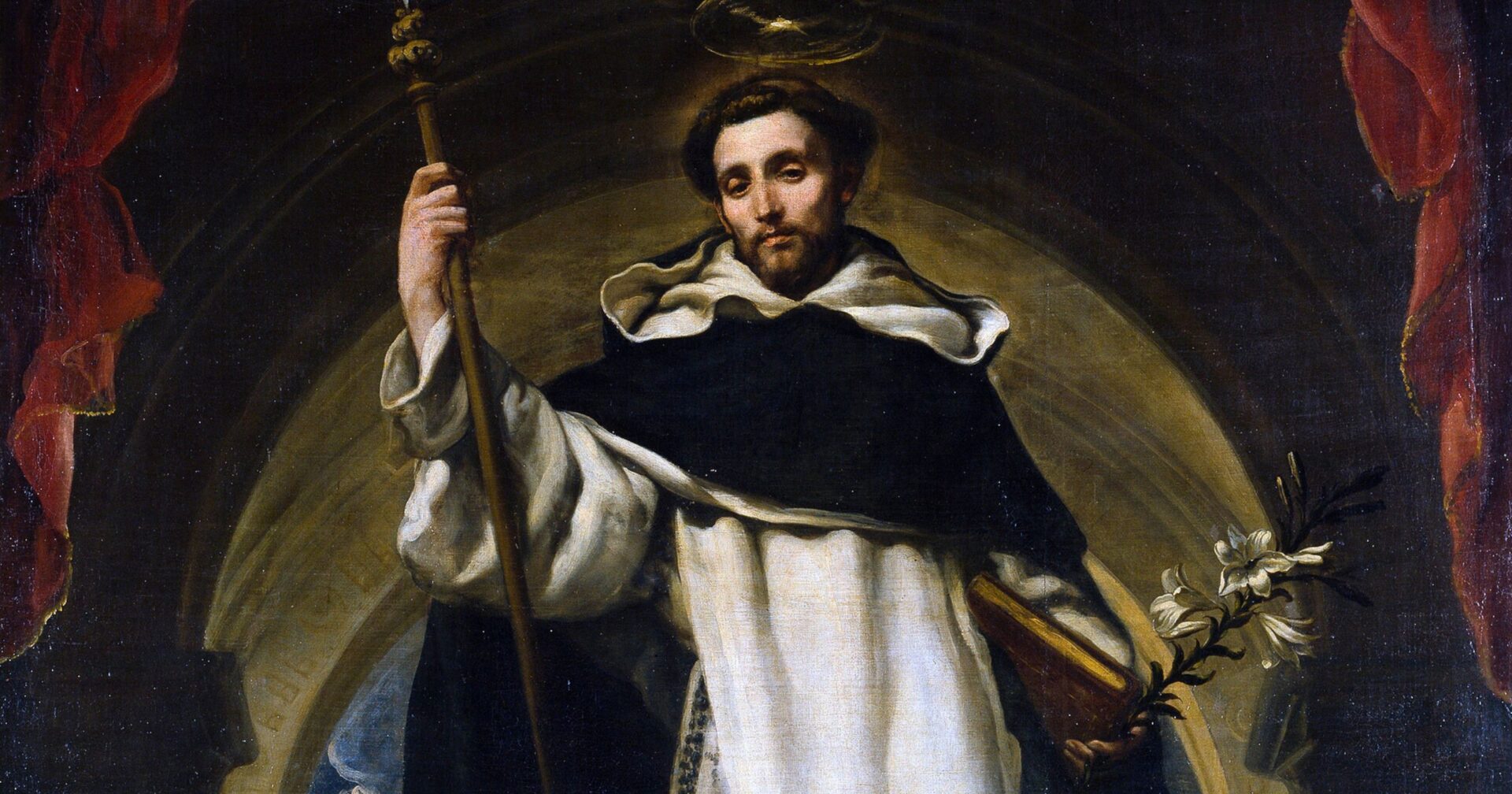
Saint Dominic was the child of Felix Guzman and Bl. Joan of Aza. He was born in Calaruega, Spain, and pursued his education at the University of Palencia. It is believed that he was ordained there while still studying. In 1199, he was appointed canon at Osma. Dominic eventually became the prior superior of the chapter, known for its strict adherence to St. Benedict’s rule.
In 1203, he went to Languedoc with Bishop Diego de Avezedo of Osma. There, Dominic preached against the Albigensians, a group considered heretical, and helped in reforming the Cistercians. In 1206, within Albigensian territory, he founded an institute for women at Prouille, supported by a group of preaching friars.
When the Albigensians murdered papal legate Peter of Castelnan in 1208, Pope Innocent III led a seven-year crusade against them with Count Simon IV of Montfort at the helm. Dominic joined this army and tried to convert the heretics through preaching. His initial efforts, however, weren’t successful.
While praying in the Church of Prouille in 1208, he reportedly received a message from Our Lady. She informed him that his efforts had borne little fruit because he had been working on barren soil, not yet touched by Divine Grace. She then instructed him to preach her Psalter, made up of 150 Angelic Salutations and 15 Our Fathers. Pope Leo XIII confirmed this revelation of the Rosary’s origin, and it’s a tradition upheld by 13 Popes that Mary first revealed the Rosary to St. Dominic. Subsequently, Dominic experienced great success with this new form of devotion, leading to the conversion of the Albigensians.
In 1214, Count Simon gifted Dominic a castle at Casseneuil. There, with six followers, he established an order devoted to converting the Albigensians. The following year, the bishop of Toulouse canonically approved this order. Although Dominic failed to receive approval for his order of preachers at the fourth General Council of the Lateran in 1215, Pope Honorius III gave his approval a year later, leading to the foundation of the Order of Preachers, also known as the Dominicans.
Dominic devoted the final years of his life to organizing the order. He traveled across Italy, Spain, and France, preaching, recruiting new members, and setting up new houses. The order was highly successful in conversions, thanks to Dominic’s unique approach of combining intellectual life with popular needs.
In 1220, he organized the first general council of the order in Bologna. After falling ill during a preaching tour in Hungary, he was forced to return to Bologna, where he passed away on August 6, 1221.
Centuries later, the Dominican Pope, St. Pius V, rallied for a rosary crusade to push back the invading Muslims. The Battle of Lepanto was won on October 7, 1571, largely attributed to the power of praying the Rosary. This victory saved Europe from the Turkish threat. News of this significant victory reached the Holy Father divinely before human channels could deliver it. That date is now celebrated as the Feast of the Most Holy Rosary. In honor of this Dominican Pope and the power of the Rosary, Popes have since worn the Dominican white as their special cassock.
Photo credit: Public Domain via Wikimedia Commons
The post Saint Dominic appeared first on uCatholic.
Daily Reading
Tuesday of the Thirty-fourth Week in Ordinary Time
Reading 1 RV 14:14-19 I, John, looked and there was a white cloud, and sitting on the cloud one who looked like a son of man, with a gold crown…
Daily Meditation
Do Not Be Led Astray, Do Not Fear
Click here for daily readings In this somewhat confusing Gospel passage Jesus says two things in particular that stand out to me. “Take heed that you are not led astray”…




